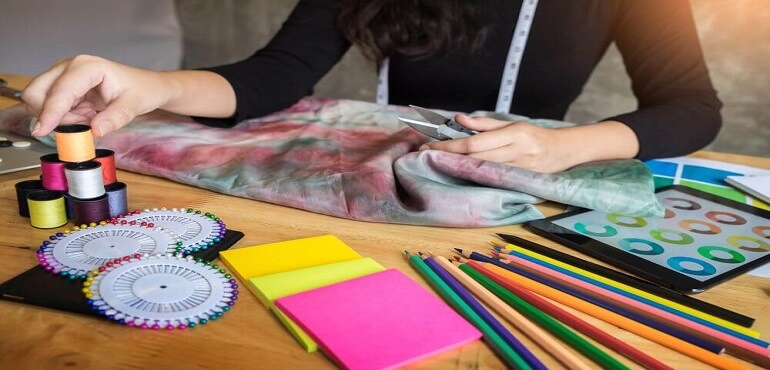As the second-largest supplier of apparel and textiles worldwide, India’s textile sector is presently seeing rapid growth. Growing domestic demand, technological advancements, and a skilled workforce driving global competitiveness, as well as government initiatives like the “Make in India” program and skill development schemes, are all contributing factors to this surge in the market, which is expected to reach a projected value of $350 billion by 2025.
A crucial potential for the integration of women into the textile sector is within this development trajectory. Despite being historically underrepresented in this field, women may contribute their special insights and skill sets to help realize the full potential of this industry. With their flexibility and accessibility, textile courses online are emerging as a transformational instrument that may overcome social and economic obstacles based on geography.
Empowering Women through Online Textile Courses
- Overcoming Geographical Barriers
Textile courses online offer a gateway for women in remote areas to access high-quality education without the need for relocation. This expansion of educational access directly correlates with broadening career prospects, ensuring that talent is not confined by geographical constraints.
- Flexibility in Learning
One of the primary advantages of online courses is their flexibility. Individuals can balance personal commitments and work ambitions by tailoring their study schedules to accommodate family demands. This transformative flexibility enables women to continue their education while maintaining other aspects of their lives.
- Cost-Effective Education
Online courses are frequently more cost-effective than traditional programs. This affordability increases accessibility for women facing financial restrictions, enabling possibilities for skill development and career growth that might otherwise be out of reach.
- Skill Development
Online textile courses, designed to match industry needs, provide specialized training in numerous aspects of the textile business. These courses equip women with the skills needed to compete in the competitive textile sector, from design and manufacturing to marketing and business management.
Choosing the Right Textile Courses Online
Choosing the best online textile course is critical for reaping the most benefits from this educational opportunity. Consider the following elements:
- Course Content
Check if the course material corresponds to your unique interests and professional ambitions. A well-structured curriculum should cover all key areas in the textile business in depth.
- Faculty Credentials
Look for courses taught by seasoned industry professionals. Faculty knowledge is critical for providing practical insights and ensuring that the programme remains relevant to current market developments.
- Learning Platform
Select an interactive learning platform with excellent learning resources and an easy-to-use interface. A well-thought-out platform improves the whole educational process and makes it easier for students to understand the course material.
- Reputation and Reviews
Examine the standing of the institution that is providing the course. Examining feedback from previous students can give important information about the efficacy of the course and the institute’s dedication to high-quality instruction.
- Certification
Examine courses that provide certificates accepted by the industry. These certificates improve one’s employability by offering a concrete validation of learned abilities and expertise.
Conclusion
In the Indian textile sector, women participation will play a major role in shaping its future. This shift is mostly the result of online textile courses, which provide women the tools they need to thrive in this quick-paced field. Women who cultivate their skills, acquire knowledge, and rise through the ranks not only impact their own destinies but also reinforce the bonds that link the textile sector.
Beyond clothing and fashion, the textile industry represents women’s entrepreneurship, liberation, and a brighter future for themselves in India. Let’s make sure that every thread in this tale is woven with inclusiveness and progress in order to build an environment that really depicts the diversity and promise of the Indian textile industry.

